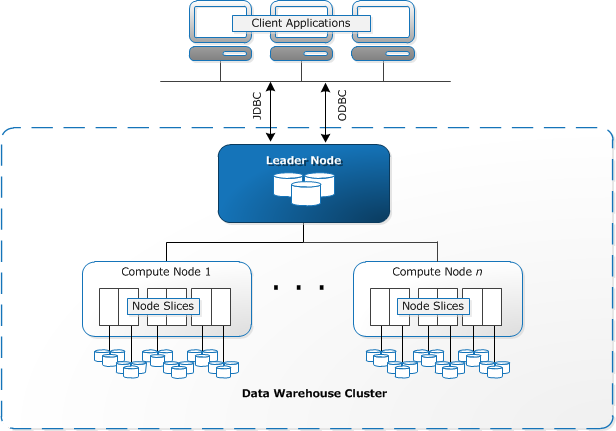

- #Copying from one redshift cluster to another how to#
- #Copying from one redshift cluster to another pdf#
- #Copying from one redshift cluster to another drivers#
It is not suggested to use this method of importing data, executing bulk INSERT commands over a JDBC or ODBC, does not perform well with large amounts of data. This technique should be avoided, even if it feels familiar to a data analyst.
#Copying from one redshift cluster to another drivers#
(* DML = Data manipulation language – Wikipedia)Īs Amazon Redshift is built on top of a PostgreSQL clone, you can connect to a cluster using the available JDBC and ODBC drivers and perform queries using DML commands. Using DML* ( INSERT, UPDATE, and DELETE) Commands.The newly created IAM User should have at least the following permissions:Īmazon Redshift supports loading data from different sources, and the methods to use are mainly two: Instead, create a new IAM User following this guide. If for any reason you prefer to use the combination of a key and a secret, then make sure you do not use keys that associate with your root account. It is strongly suggested to use Role Based Access instead of a Key Base one, for security reasons. That user must have the authorization to access a particular resource, from which data load into the Amazon Redshift cluster. To gain this type of access, you need to provide the Access Key ID together with the Secret Access Key for an already existing IAM User. The COPY command that loads data into the cluster uses this ARN as a parameter.
#Copying from one redshift cluster to another how to#
The minimum number of permissions the role must have is the following:įor a step by step guide on how to create an IAM Role and attach it to a cluster, please see this guide from Amazon.Īfter the creation of an IAM Role, an ARN for this particular role returns. To use a Role Based Access Control, you first have to create an IAM Role using the Amazon Redshift Service Role type and attach that role to a cluster. It is more secure and offers fine-grained control of access to resources and sensitive data. Role Based Access is the recommended by Amazon access option. You provide the Access Key ID and Secret Access Key for an IAM user that is authorized to access the AWS resources that contain the data. Your cluster temporarily assumes an AWS Identity and Access Management (IAM) role on your behalf. To grant access to an Amazon Redshift instance to access and manipulate other resources, you need to authenticate it. To do that an essential prerequisite is to set up the right permission and roles to make these resources accessible to Amazon Redshift. E.g., you load data into your cluster through Amazon S3 or Amazon DynamoDB. To carry out the most typical scenario for loading data into Amazon Redshift, we use another Amazon AWS resource as a staging entity for the process.
#Copying from one redshift cluster to another pdf#
Bonus Material: FREE Amazon Redshift Guide for Data Analysts PDF


 0 kommentar(er)
0 kommentar(er)
